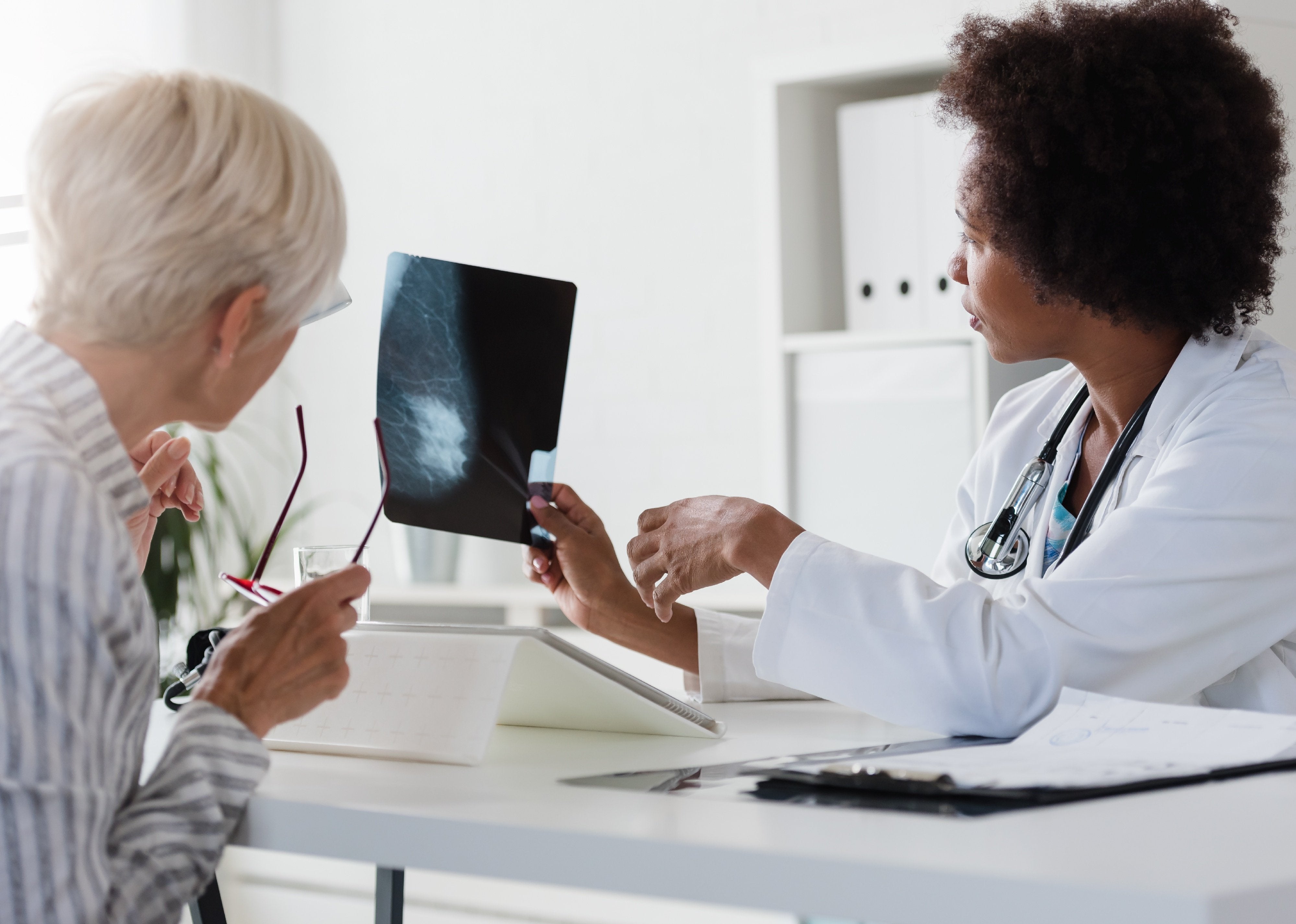See how the breast and cervical cancer screening rates in Alabama compare nationally
Published 1:07 pm Sunday, June 26, 2022
Lordn // Shutterstock
See how the breast and cervical cancer screening rates in Alabama compare nationally
As coronavirus cases rose in 2020 and overwhelmed the health care system, the number of patients seeking non-emergency treatments such as annual checkups and health screenings dropped. In April 2020, breast cancer screenings declined by 87% and cervical cancer screenings were down by 84% from the previous five-year averages, according to the Centers for Disease Control and Prevention. The pandemic not only took a toll on those who contracted COVID-19, but also exacerbated timely medical preventive treatment for those with other health conditions.
One study—published in the October 2021 issue of Preventive Medicine—examined the impact of COVID-19 on screenings from the first half of 2020; it confirmed the decline in both cervical and breast cancer screening across geography, various ethnic and racial groups, and rurality. Results correlated with the rapid increase of COVID-19 cases in spring 2020.
As recommended by the CDC, mammograms and Papanicolaou test screenings (also known as Pap smear tests) are vital tools in the fight against breast and cervical cancer. The guidelines recommended by the U.S. Preventive Services Task Force (USPSTF) advise that women between the ages of 50 and 74 have a mammogram every two years. Additionally, screening for cervical cancer is recommended every three years for women ages 21 to 29. The USPSTF advises a Pap test every three years and/or HPV testing every five years for women ages 30 to 65.
However, as awareness grows about the importance of these detection tools, one thing standing in the way of women getting their recommended screenings is access to quality care. Health disparities are a major public health concern and can hinder cancer screening and treatment. Patients who lack insurance, aren’t able to travel to doctor visits, and face language or cultural barriers often have worse health outcomes. To save lives and meet desired screening targets, these gaps must be addressed to ensure quality health care access.
Citing data from the CDC, HealthMatch looked at screening rates for breast and cervical cancers in Alabama and outlined the role of screenings in detecting early-stage cancers and improving survival outcomes. CDC reports this screening data is specific to ‘women’ but does not detail whether the data categorizes people based on their gender identity or their sex assigned at birth.
Alabama breast cancer screening rates
– Breast cancer screening rate in past 2 years, ages 50-74: 78.27%
— #27 highest among all states
— 0.03% lower than national average
Alabama cervical cancer screening rates
– Cervical cancer screening rate in past 3 years, ages 21-65: 79.86%
— #9 highest among all states
— 1.56% higher than national average
Just ten states are meeting mammography screening goals. Healthy People 2020 was a national public health goal to increase the percentage of women who receive breast cancer screening by 2020. Women between the ages of 50 and 74 were advised to have a mammogram every two years. According to State Cancer Profiles, 78.3% of women were screened in the U.S. by 2020, a median percentage that fell short of the target goal of 81.1%.
There were, however, 10 states and territories that did meet the target goal (>81.1%): Maryland, Connecticut, Iowa, New York, Louisiana, Maine, Puerto Rico, Hawaii, Rhode Island, and Massachusetts.
Healthy People 2030 continues to aim towards percentage point improvement. The target goal is to have 77.1% of women screened for breast cancer in all states in this decade.
States with the highest breast cancer screening rates
#1. Massachusetts: 86.66%
#2. Rhode Island: 84.81%
#3. Hawaii: 83.8%
#4. Maine: 82.88%
#5. Louisiana: 82.24%
States with the lowest breast cancer screening rates
#1. Wyoming: 65.77%
#2. Alaska: 70.09%
#3. Utah: 71.43%
#4. Idaho: 71.73%
#5. Oklahoma: 71.92%
No states meet Pap test screening goals. In 2019, 73.5% of women ages 21-65 were up-to-date with a cervical cancer screening. While this may look like a high percentage, it is important to note that this number has decreased sharply in the past 10 years. State Cancer Profiles—an interactive map engine maintained by the CDC and National Cancer Institute—verifies that no states were able to meet the national target of having 93% screened by 2020.
Connecticut had the highest percentage of screenings recorded at 82.4%. The median value for the U.S. is just 77.9%. The national goal for this decade is to strategically increase the number of cervical cancer screenings based on the most recent guidelines by working with both patients and providers. The target is to have 84.3% of women screened for cervical cancer by 2030.
States with the highest cervical cancer screening rates
#1. Connecticut: 82.42%
#2. Mississippi: 82.39%
#3. North Carolina: 81.76%
#4. Kentucky: 80.75%
#5. South Dakota: 80.69%
States with the lowest cervical cancer screening rates
#1. Alaska: 69.17%
#2. Utah: 70.47%
#3. Idaho: 71.18%
#4. Illinois: 71.61%
#5. Wyoming: 72.37%
![]()






